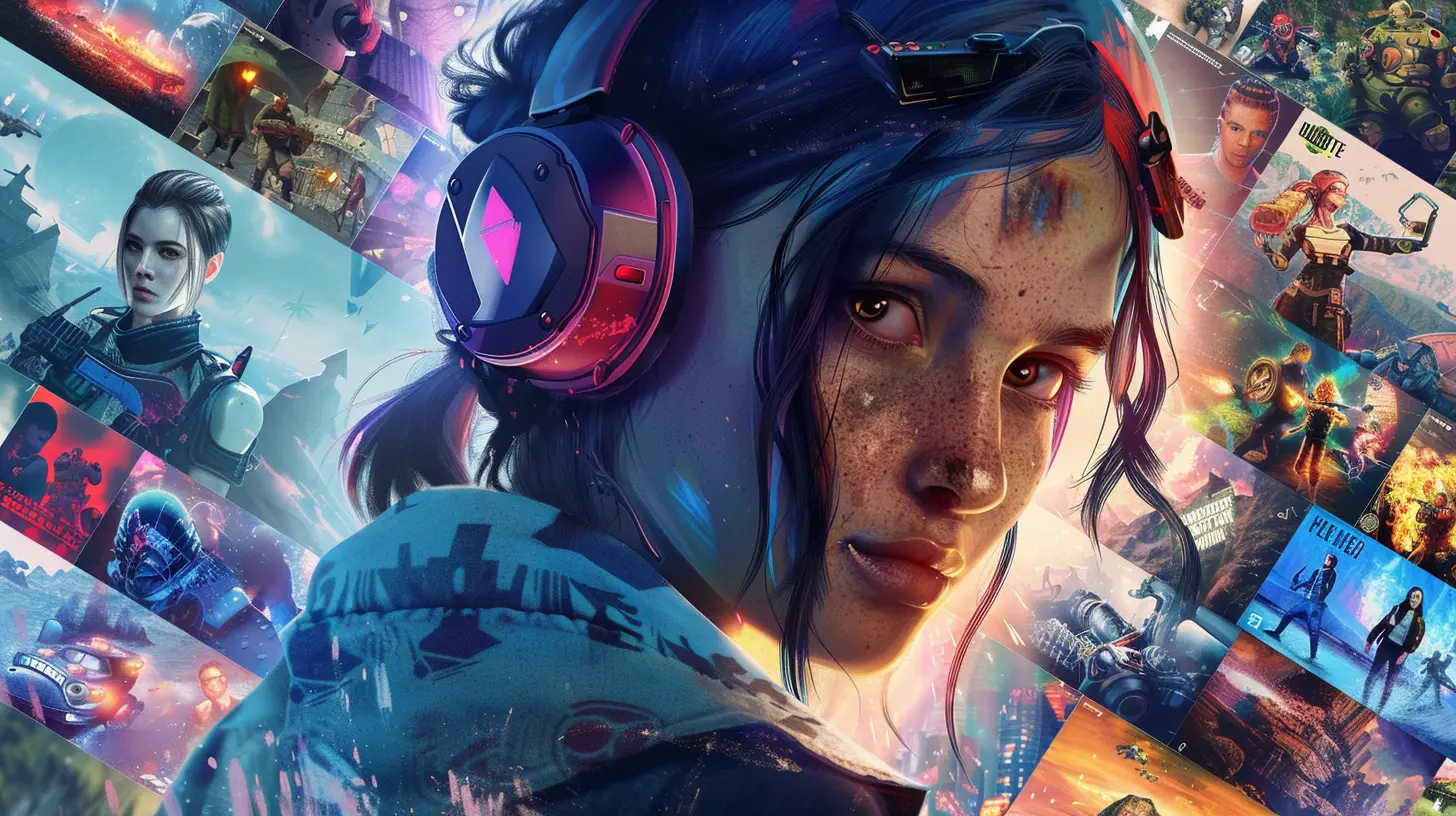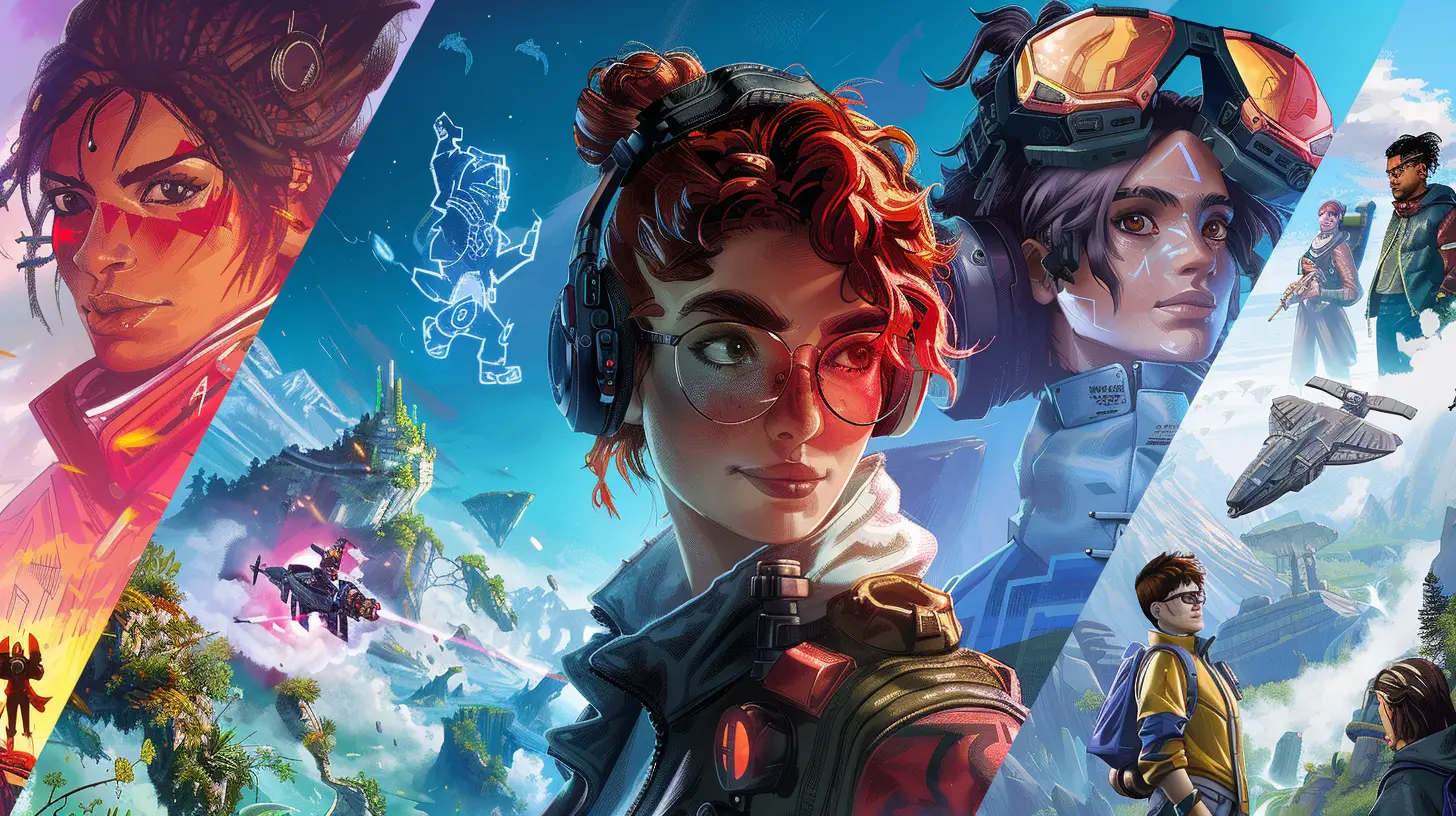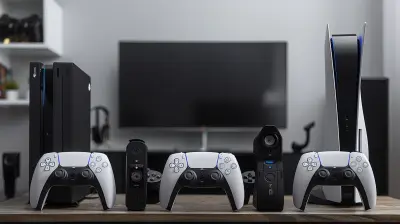14 February 2025
Gaming has come a long way. A few decades ago, the thought of playing a game with someone using a different console or device was nothing short of science fiction. Fast forward to today, and cross-platform gaming isn't just possible; it's practically expected. Whether you're duking it out in Fortnite, building blocks in Minecraft, or battling demons in Diablo IV, chances are you’ve either played or heard of people playing on different platforms together.
But cross-platform gaming didn’t get here overnight. Oh no – it’s a story filled with challenges, breakthroughs, and a community that just wouldn’t take "no" for an answer. So, buckle up as we take a deep dive into the journey of cross-platform gaming, from its humble beginnings to its booming presence in mainstream gaming today.
What Are Cross-Platform Games?
Before we get ahead of ourselves, let's define what we’re talking about. Cross-platform games are titles that allow players on different gaming systems – like PlayStation, Xbox, PC, or even mobile devices – to play together in the same game. Think of it as breaking down the walls between gaming "countries." These games let friends game together without being tied to a specific platform.For instance, if you’re playing on an Xbox and your buddy’s rocking a PlayStation, you can still squad up – no need for anyone to drop extra cash on a new console. Cool, right? But believe it or not, this wasn’t always the norm.
The Early Days of Gaming: Walled Garden Consoles
If you grew up during the golden age of gaming in the ‘80s and ‘90s, you probably remember how things used to work. Back then, gaming platforms were basically islands. Sega had its Genesis, Nintendo had its SNES, and Sony would soon launch the PlayStation. You chose a platform, stuck to it, and hoped your friends had the same one. If they didn’t? Tough luck – no multiplayer for you.Part of the problem was competition. Each gaming company viewed the other as a rival (and rightly so). They were in a fierce battle to sell consoles, and locking people into their ecosystems was a key strategy. If you wanted to play with your friends, everyone had to buy the same console. And you know what? It worked—for a while.
But as the internet entered the gaming space, players started asking the big question: Why can’t I just play with anyone, no matter what console they have?
The Internet Era: The First Seeds of Cross-Platform Play
The internet flipped the script on the gaming world. Multiplayer gaming exploded in the late ‘90s and early 2000s as PC titles like Quake, Counter-Strike, and World of Warcraft brought players together online. This shift made it obvious: People didn’t care about platform barriers. They just wanted to play together.Still, consoles were stubborn. Each company stuck to its guns and refused to connect with competitors. While PC gaming thrived with open multiplayer, console ecosystems remained as closed as a locked treasure chest. It wasn’t until a little game called Final Fantasy XI released in 2002 that we saw a crack in the armor.
The First Cross-Platform Game: A Bold Gamble
Final Fantasy XI deserves a standing ovation. It was the first game to truly bridge the gap, allowing players on PlayStation 2, PC, and later Xbox 360 to play together. This was groundbreaking. For the first time, gamers on multiple systems could share the same experience.But there was a catch (there’s always a catch). Achieving this feat required Square Enix, the game’s developer, to handle all the server infrastructure itself. In other words, it didn’t rely on Sony, Microsoft, or any other platform to make cross-platform play work. This solution worked for an MMORPG like Final Fantasy XI, but for many other games, the tech and business hurdles were just too much.
The Stumbling Blocks: Why Did Cross-Platform Play Take So Long?
Let’s be honest – cross-platform gaming probably should’ve been a thing much sooner. So, why the delay? The answer comes down to a mix of technical and business challenges.Technical Hurdles
Cross-platform play isn’t just about flipping a switch and calling it a day. Different platforms have different architectures, security systems, and online infrastructures. Ever try opening a file on a Mac that was created on a PC back in the day? Same vibe here. Developers had to find ways to make communication between these systems seamless, and that wasn’t easy.Plus, let's not forget about balancing. A gamer on a PC with a mouse and keyboard has a different experience from someone on a console with a controller. Developers have to make sure those differences don’t ruin gameplay.
Corporate Politics
Then there’s the business side of things. Console makers didn’t want to collaborate because they feared it would hurt their bottom line. Why would Microsoft want Xbox gamers jumping online to play with PlayStation users when they could just convince their friends to switch to Xbox instead? It was a classic game of tug-of-war – and gamers were stuck in the middle.In fact, even when the technology was ready, companies like Sony were (very publicly) resistant to cross-platform play. Remember the backlash when Fortnite players discovered they couldn’t use their account on both Switch and PlayStation? Yeah, that didn’t go over well.
The Turning Point: Fortnite and the Cross-Platform Revolution
So, what changed? In a word: pressure. By the late 2010s, gamers were done with platform barriers. Online communities were screaming for cross-play, and developers started joining the chorus. Then came Fortnite, the game that changed everything.When Fortnite launched in 2017, it quickly became a global phenomenon. Millions of players flocked to the game, and demand for cross-platform play skyrocketed. Suddenly, it wasn’t just a "nice-to-have" feature; it was a necessity. Epic Games, Fortnite’s developer, pushed harder than anyone before to break down platform barriers.
By 2018, Fortnite managed to do the impossible – full cross-platform play across Xbox, PlayStation, PC, Switch, and even mobile. Gamers rejoiced, and other developers took note. Fortnite had proven the demand for cross-play was real, and the floodgates opened.
Cross-Platform Gaming Today: The New Norm
Today, cross-platform gaming is everywhere. Titles like Call of Duty: Warzone, Rocket League, and Apex Legends allow players to join forces across systems without a second thought. And thanks to advancements in cloud gaming and online infrastructure, it’s easier than ever for developers to make it happen.Even companies that once resisted – looking at you, Sony – have largely embraced the concept. Heck, Sony even lets you stream PlayStation games on your PC now. Talk about full-circle moments.
It’s not just the big-budget AAA games, either. Indie studios are getting in on the action, too, bringing cross-platform play to smaller, creative titles.
What’s Next for Cross-Platform Gaming?
So, where do we go from here? While cross-platform play is more common than ever, there’s still room for improvement. For one, matchmaking can still be a bit clunky when balancing players across devices. And there are always questions about fair play – should console players have to battle it out with PC players using faster hardware and peripherals?The real future, though, might lie in cloud gaming. Platforms like Xbox Cloud Gaming and GeForce Now allow players to stream their games on virtually any device. If this trend grows, the lines between platforms could blur even further. Imagine a world where gaming isn’t tied to hardware at all – you just pick up any device, log in, and play.
Closing Thoughts
The evolution of cross-platform gaming is nothing short of a modern-day gaming miracle. What started as a niche feature for a handful of games has grown into a standard that players now demand. And honestly? It’s about time. Gaming is supposed to be about bringing people together, not drawing unnecessary lines between them.So the next time you squad up with friends from different platforms, take a moment to appreciate how far we’ve come. The gaming world might have started with walled gardens, but today? It's one big playground.







Korian Porter
What an intriguing journey! It's fascinating to see how cross-platform gaming has evolved from a niche interest to a mainstream phenomenon. What key factors do you think drove this change? I'm curious about the impact on player communities and game development strategies!
March 15, 2025 at 5:23 PM